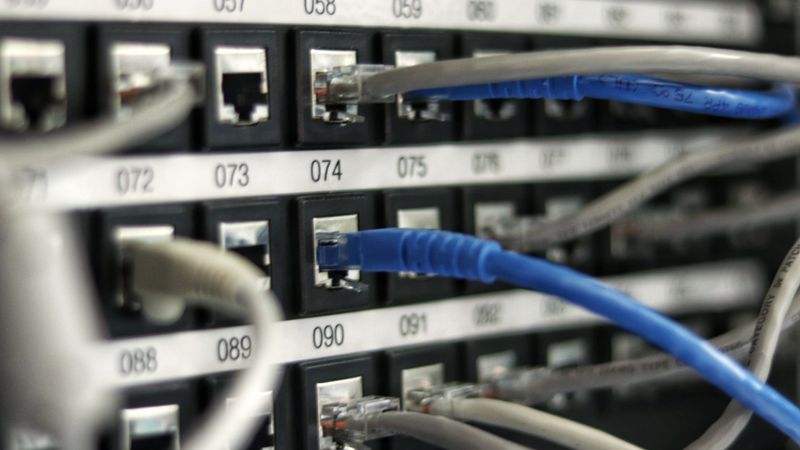General Port Protection Against Electrical Stress
Article #2 of our Circuit Protection Series: A short guide to ports, electrical stress, and solutions.
This is the second article in a 7-part series examining circuit protection. The series examines the challenges of high-speed circuit protection, as well as the many products and solutions used to solve them. This series is sponsored by Mouser Electronics, an online distributor of electronic components. Through their sponsorship, Mouser Electronics shares its passion for technologies that enable a safe and connected world.
Ports provide a connection to the outside world, primarily for a device looking for data or power. Ports create an opening that becomes an easy entry point for electrical stress. Electrical stress is the moment when the electrical charge is too high for the insulation. Electrical stress can cause serious damage to electrical systems and protections must be put in place to ensure the safety of both the system and its surrounding environments. This article examines the common reasons for electrical stress and ways to protect general ports.
Common electrical stress points include lightning strikes to a power line that causes a surge to travel down the power line itself and into the device. Even strikes nearby can induce a voltage spike on the power line. Other types of common electrical stress include:
Static electricity:. Typically referred to as electrostatic discharge (ESD), this stress occurs when two objects come into contact. It’s what happens when you get a shock from a door handle after walking on particular floor surfaces. In automotive, ESD events can result in sub-micron damage to the device that can lead to device failure.
Short circuits: They are typically caused by a power cross, where two wires either come into contact with each other or another or wire connections that have come loose. This causes a large amount of current to flow suddenly. This surge can cause damage.
General overvoltage events:. These events occur daily from everyday activities such as turning on motors or lights. This inductive load-switching can wear out electronics over time and cause damage.
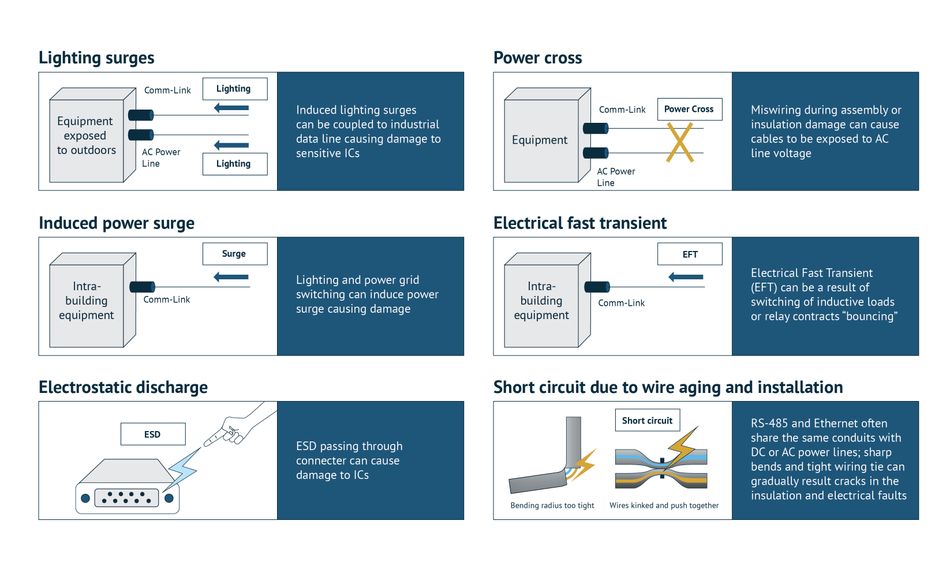
Figure 1: Common electrical stress points would be things such as lightning strikes to a power line that might be traveling down the power line itself and into the device. It could even strike nearby and induce a voltage spike on the power line or even the data lines that need to be protected. Image credit: Littelfuse
Circuit Protection Technologies
Research has resulted in safer and safer compact circuits. These advances have occurred in a variety of ways from better insulation to converting textile fabric into circuits. However, the risk of electrical stress cannot be totally mitigated and so further protective measures must be taken. Various approaches can be taken depending on the applications. The chart below identifies some of the technologies, which can apply to power, and communication ports (Figure 2).
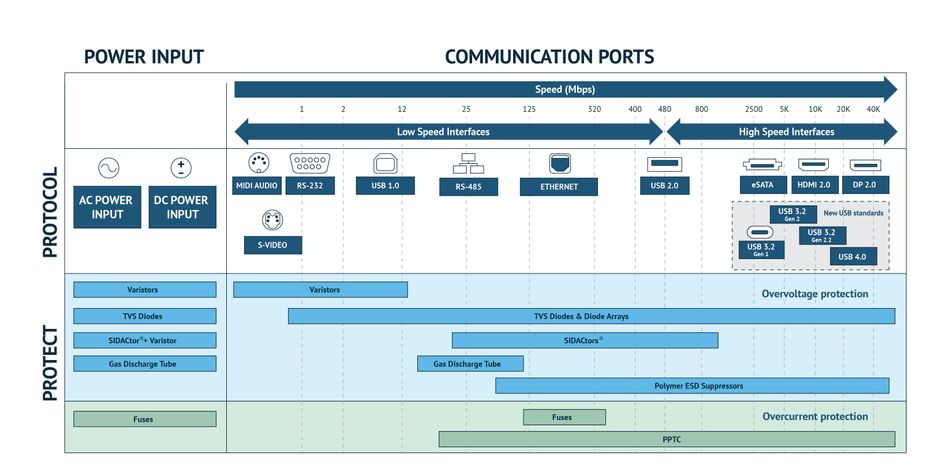
Figure 2: Wide array of Littelfuse circuit has a wide selection of protection solutions for power and communication ports. Image source: Wide Littelfuse solutions for power and communication ports.
Top of the chart is listed various ports based on the data speed, from the slowest on the left side to the fastest on the right. The chart identifies which technologies to consider when looking for optimized port protection.
How are different ports being protected?
Ethernet
Protection for ethernet ports varies based on the level of exposure to electrical hazards. For indoor applications, with minimal exposure to potential hazards, a single ESD protector may be sufficient. A single diode array placed after the transformer can protect the Ethernet PHY in this case. If the application is outdoors where the environment will be harsher, the risk of damage due to an environmental electrical hazard is increased. A fuse is needed to help protect during a power cross event when the power line makes contact with the communication lines. Additionally, a gas discharge tube (GDT) such as the CG6 will help protect against dangerous surge events associated with lightning strikes. A diode array, such as the LC03, then adds another level of protection, further clamping the surge and protecting the PHY from damage.
RS-485
The protection of an RS-485 line varies by exposure level. For indoor or intra-building applications, a polymeric positive temperature coefficient device (PPTC) and diode-array combination will provide sufficient over-current and over-voltage protection. However, if the port connects outdoors, such as in a rooftop unit heating, ventilation, air conditioning, and condensins (HVAC unit) - a higher level of surge protection is needed such as a coordinated protection scheme with GDTs and SIDACtors. A PPTC provides overcurrent protection and acts as a coordinating element between the GDT and the SIDACtors. The PPTC ensures that the SIDACtor reacts first, providing fast protection until the GDT can react.
CAN, LIN, SIM, µSIM
As the use of electronics in automotive has increased, so has CAN and LIN bus prevalence. These communication lines require ESD protection, typically provided by diode arrays. For these automotive-related applications, it is important for all electronic components to pass the rigorous standards of AECQ and its included tests.
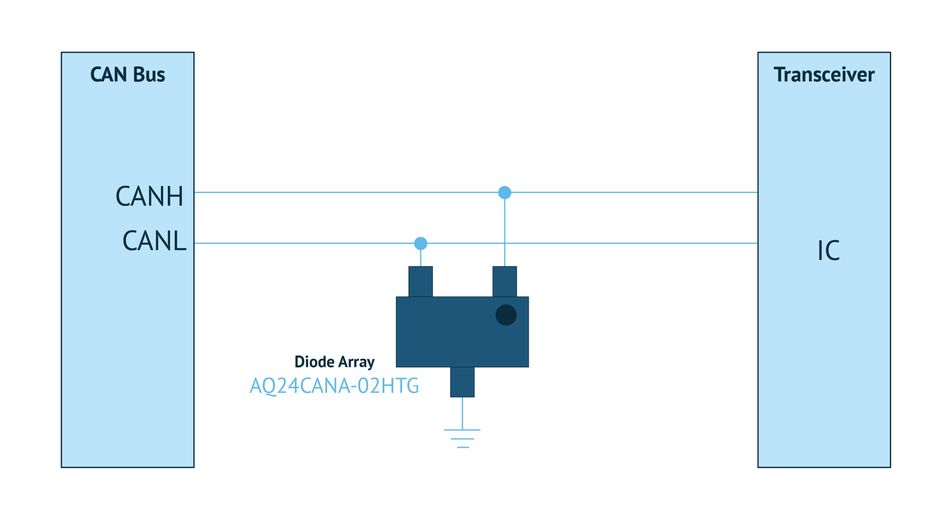
Figure 2: Wide array of Littelfuse circuits has a wide selection of protection solutions for power and communication ports. Image source: Wide Littelfuse solutions for power and communication ports.
Power Ports
Power ports are terminals connecting an electrical network or circuit to an external circuit. Ports, although coming in a range of designs contains metal strips that make contact with prongs, an insertion into port when plugging in allows this transmission of energy to happen efficiently and effectively.
AC Power ports
AC power input ports although extremely common do have a relatively high hazard potential. Fuses and varistors are used to protect against overcurrent and overvoltage events, respectively. The exact sizing of those devices varies depending on how much power or precisely where it will be connected to line power. Designers will not need the same protection for a device plugging into a wall in a home, as the protection a motor might need in an industrial setting, but the selection criteria basics remain the same for each situation. For most electronic equipment, a cartridge or cylindrical fuse is sufficient to provide overcurrent protection. The varistor is the first line of defense against voltage transients. It needs to combine a good balance of surge capability, speed to react, and be small enough to be placed in the circuit.
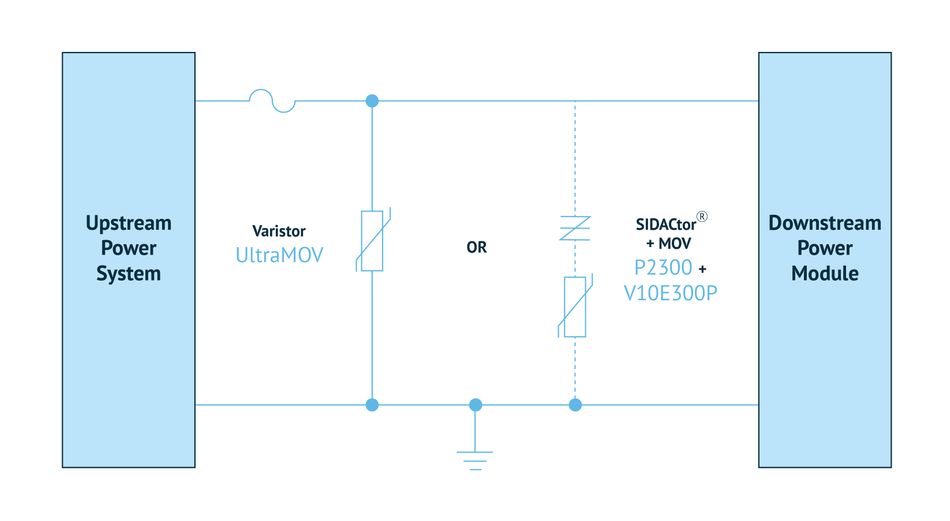
Figure 4: AC Input Protection.
DC PowerDC inputs are very similar to AC but require different specific considerations (Figure X). DC inputs have different options depending on the power levels one will see. Protection could be as simple as a TVS diode for transient protection of a 12VDCdc or 24VDC input. For DC inputs of portable electronic devices, ESD protection can be provided by a tvs diode array and a resettable PPTC can be used for overcurrent protection. Similarly, to AC-power input ports, fuses provide overcurrent protection, and varistors and GDTs provide surge protection to DC input ports with high voltages, such as 48VDC or higher. Similar to AC-power input ports, DC inputs for high voltages, such as 48 Vdc and higher, fuses provide overcurrent protection, and varistors and GDTs provide surge protection.

Figure 5: DC Input Protection
Summary
This article has outlined the different methods to protect general ports from electrical stress. Specific circuit protection technologies must be applied correctly to different applications. Location, environment, and volage are all aspects to consider when designing for optimal port protection.
This article was initially published by Mouser and Littlefuse in an e-magazine. It has been substantially edited by the Wevolver team and electrical engineer Fahad Farooq. It's the second article of a 7-part series examining circuit protection. Future articles provide an overview of how to protect wired communication, the change of USB standards, and the importance of protecting against electrical stress in industrial automation environments.
Article one gave an overview of general ports.
About the sponsor: Mouser Electronics
Mouser Electronics is a worldwide leading authorized distributor of semiconductors and electronic components for over 1,100 manufacturer brands. They specialize in the rapid introduction of new products and technologies for design engineers and buyers. Their extensive product offering includes semiconductors, interconnects, passives, and electromechanical components.


